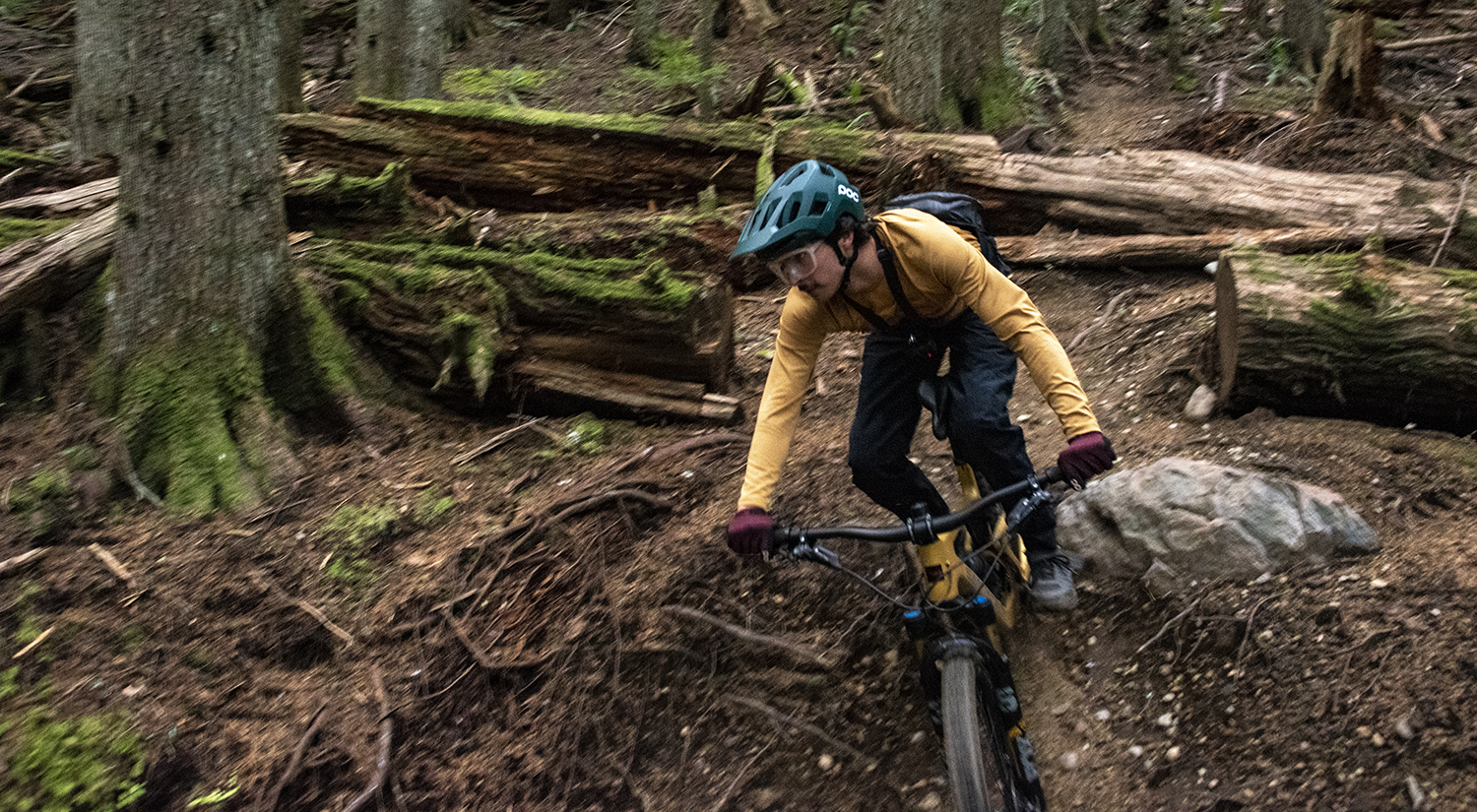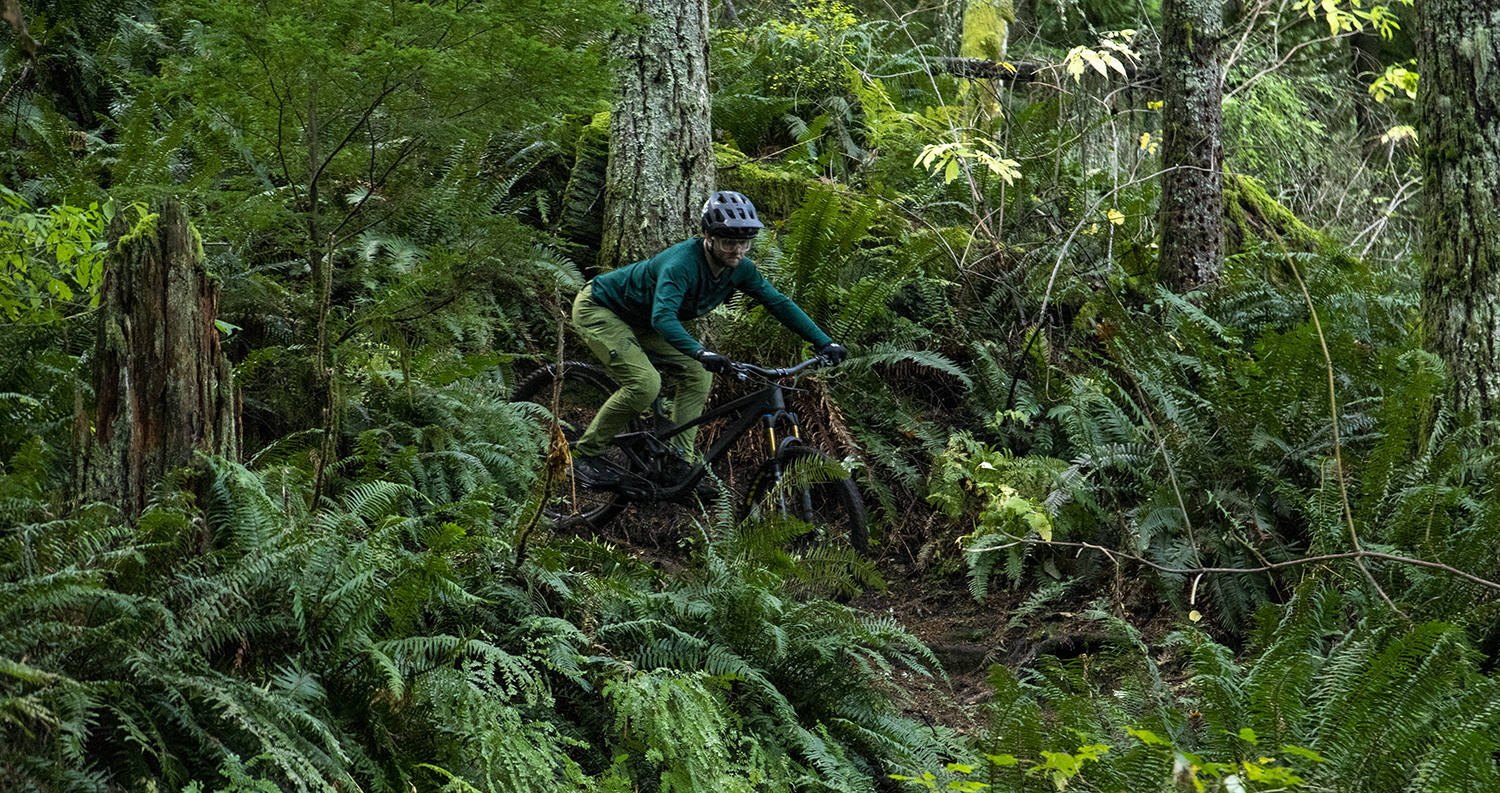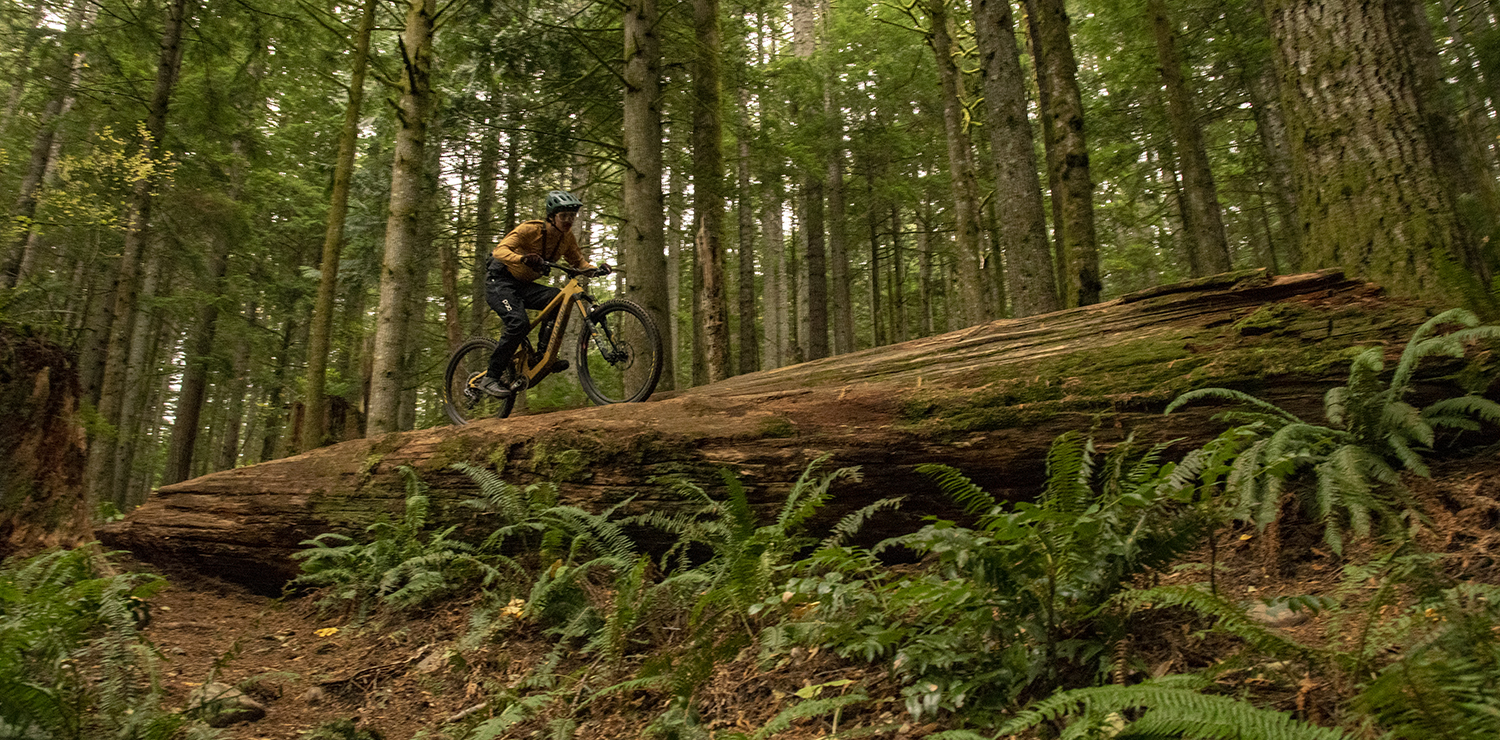POC Kortal & Kortal Race MIPS
POC Kortal
Size Tested: Medium
MSRP: $200
Blister’s Measured Weight: 373 grams
Test Location: Gunnison-Crested Butte, Colorado; Washington
Test Duration: 2 months
POC Kortal Race MIPS
Size Tested: XL-XXL
MSRP: $250
Blister’s Measured Weight: 498 g
Test Location: Washington, Oregon, California
Test Duration: 4 months

Intro
POC’s new Kortal and Kortal Race MIPS helmets are meant for Trail and Enduro bike use and are intended to offer more coverage and protection than more minimal, lightweight options. And as POC’s Head of Product, Oscar Huss, described in Episode 152 of GEAR:30 when talking about the Kortal, going with lots of coverage and a not-especially-low-profile design were keys to their design philosophy and meeting the protection goals that POC set out for the Kortal. But despite the Kortal being neither particularly light nor low profile, it’s proven to be impressively comfortable, and we think it’s a compelling option for a whole lot of riders.

Design & Features
The overall silhouette and design of the Kortal and Kortal Race MIPS are identical — the Race MIPS version is essentially a more fully-featured version of the same helmet, with the price tag bumped up a bit to match. Astute readers will have figured out that the addition of MIPS to the Kortal Race MIPS is perhaps the most notable difference, but it also adds a Recco reflector and a twICEme NFC medical ID chip.
Those probably merit some explanation. MIPS, for folks who aren’t familiar, stands for Multi-directional Impact Protection System and is essentially a thin plastic liner that sits between the padding on the inside of the helmet and the main shell. The idea is to allow the shell of the helmet to rotate slightly on the rider’s head, in the event of a crash where the helmet hits the ground, to reduce the rotational loads that get transmitted to the head. It’s become fairly commonplace in high-end bike and ski helmets, though (as we’ll describe more below), POC’s implementation of MIPS in the Kortal Race MIPS is especially impressive.
The Recco reflector and twICEme chip are less common features in bike helmets. The former is essentially a locator technology, where in the event of an accident a searcher with a dedicated Recco detector can scan the search area with a directional radar beam that bounces off the reflector, and helps them determine the direction of the victim.
The twICEme chip allows you to store your contact details and basic medical information on an NFC chip in the helmet. Recording the information requires the twICEme phone app, which first responders could then use to get your vital information including blood type and potential allergies in the event of an accident. Reading the information off the helmet only requires an NFC-compatible smartphone; the twICEme app isn’t needed.

Back to the shared features: both have a notably large, adjustable visor that’s meant to break away in the event of a crash to prevent the visor from catching and twisting the helmet on the rider’s head. The visor has four different positions, and an especially burly detent system that does an excellent job of keeping it in place, unlike the visors on some other helmets that are more prone to changing positions with a light bump.
Both helmets also feature a fairly conventional dial retention system, which can be anchored at any one of three different heights at the back of the helmet. The strap features a standard buckle and uses some very nicely designed spreaders to push the upper branches of the “Y” in the straps apart to offer more ear clearance. The padded liner inside the shell is removable and washable, and features especially cushy, high-density padding that’s both quite comfortable and notably absorbent, and does a great job of keeping sweat drips at bay.
The Kortal features 17 large vents around the shell, and the ones across the back of the helmet are positioned such that a goggle strap leaves them mostly uncovered. The visor can also be raised high enough to store glasses underneath it, with the earpieces stuck through the helmet vents, if that’s your preferred on-bike eyewear option.
Overall, the Kortal feels really substantial — of course, that’s no substitute for actual impact testing, but it does inspire a certain amount of confidence in the protection offered. And in terms of actual testing credentials, both versions are certified to both US and EU standards for bike helmets, as well as the Dutch NTA 8776 standard for e-bike use.

Fit
David Golay: Both the Kortal and Kortal Race MIPS are offered in three different sizes, but somewhat curiously, they’re labeled differently. POC calls them XS–S, M–L, and XL–XXL on the Kortal Race MIPS, and a more conventional S, M, and L on the base Kortal. I typically wear a Large helmet in most models but have been in the XL–XXL Kortal Race MIPS and it fits well. That’s the typical size I’ve worn in a number of other POC helmets that use that same sizing scheme. Think of it as lining up to a more typical S/M/L, if you like, or go by the measured circumferences laid out in POC’s size chart — my head measures about 61 cm, which puts it nicely in the middle of the XL–XXL size, and that feels spot-on.
In terms of shape, I’d call the Kortal about middle-of-the-road in terms of the ratio of length to width — it’s not as round as the Giro Source MIPS or Maniphest Spherical, for example, but significantly more so than the Smith Forefront 2, and pretty similar to the Fox Speedframe Pro. The Kortal has especially high coverage across the back of the head, even for this class of Trail / Enduro helmet that’s been moving towards more and more coverage in recent years. The added coverage adds a bit of weight and bulk to the Kortal, but stands to offer improved protection around the back of the head and upper neck.
For me, personally, I could use a slightly more oval shape — the Forefront 2 remains my personal gold standard for happening to align perfectly with my head shape — but I’ve been very happy with the fit and comfort of the Kortal Race MIPS, too. The dial adjuster cinches everything down nicely with nice, even pressure, and the Kortal does a really nice job (at least on my head) of offering great coverage without the brow coming into my field of view, my ears rubbing on the shell, or any of those minor irritations that can arise on broader-coverage helmets.
As always, we’d recommend trying on a helmet before buying — having something that actually fits on your head properly is crucial to making sure it protects to its full potential. But the fit of the Kortal is pretty middle-of-the-road in terms of shape, and I’d expect it to work well for a whole lot of people.

Dylan Wood: I’ve been spending time in the Medium Kortal, which POC claims to cover heads with a circumference of 55-58 cm. My head is about 56 centimeters, and the Medium Kortal fits quite well. In my case, I found the Kortal to be more long than it is wide – the sides of the helmet shell contact the sides of my head, while I have plenty of room in the front-to-back direction to crank the dial adjuster down. While I’d consider my head more spherical than oval-shaped, I would say the Kortal definitely isn’t the most spherical helmet out there. But to repeat what David said above, go try the Kortal on and you’ll have a much easier time figuring out if it fits your head.
Like David, I had no fit issues with the Kortal. It is also quite nice that you can change the up-and-down position of the dial adjuster on the back of the helmet while keeping the helmet on your head. I know most helmets these days do have this feature, but it really does help you dial in the fit in a matter of seconds, and it makes going back to a helmet that requires you to take it off your head and reposition the anchor point of the back dial quite annoying.

On The Trail
David: For the most part, I’ve forgotten about the Kortal MIPS Race while I’ve been wearing it, and that’s a really good thing. The ventilation is better than average for this sort of Trail / Enduro helmet (if not quite on par with the exceedingly cool Speedframe Pro), the interior padding does a great job of directing sweat drips away from the face, and it’s been very comfortable overall.
The MIPS Integra system used in the Kortal Race MIPS is also one of the more impressive parts of the helmet. I’ve complained in the past about certain other MIPS implementations being some combination of noisy and / or making it feel like the helmet is moving around on my head — which is especially noticeable for me, since I tend to keep my head shaved — but there’s absolutely none of that with the Kortal Race MIPS. Its MIPS liner is both totally silent, and sufficiently damped as to not really feel like it’s moving around under the weight of the helmet as you bounce down the trail. It’s outstanding.
I’ve also come to appreciate the gigantic visor on the Kortal — especially because, as I noted above, it does an uncommonly good job of staying put and not changing positions, which can be a real annoyance on some other helmets. The biggest factor for me is that it actually seems to make an appreciable difference in keeping rain off whatever eyewear I happen to be wearing, which in turn goes a long way towards keeping said eyewear clear and un-foggy. I did a ton of riding in very, very wet weather earlier this winter, and the monster visor on the Kortal was a real boon there.
It’s probably helpful if you’re riding in a lot of bright, sunny areas too, but between how dense the tree cover is in most of the places I ride and the fact that the sun probably won’t reappear in the PNW for another few months, I’ve got a lot less testing on that front. But maybe more to the point, it hasn’t obstructed my view, flapped around, or done anything else annoying, so unless you’re super opposed to the aesthetics, I don’t think there’s any downside.
I had wondered how much the added weight and slightly increased bulk of the Kortal Race MIPS would feel on the bike, and honestly, I really don’t notice it once I start riding. It does feel a bit heavier than most other helmets in the class (everything else I’ve mentioned here is ~80–100 g lighter) when you’re holding it in your hand, but once it’s on my head, I’ve just forgotten about it. And that probably makes sense — sure, it’s ~20% heavier than a lot of other stuff I’ve used recently, and that sounds like a lot when you put it that way. But it’s not actually very much weight in absolute terms and is a total non-factor in my book. And if you are worried about the weight, the non-MIPS version of the Kortal is substantially lighter (though we are comparing different sizes, so take our measured weights with a grain of salt). If you’ve got a jacket with a hood that’s a marginal fit over a lower-profile helmet, the Kortal might push that fit over the brink (especially in the larger sizes) but even the XL–XXL has been fine in the couple of jackets I’ve been using most of late (primarily the Fox Flexair Neoshell and 7mesh Skypilot) so I don’t think that’s a big deal, either.

Dylan: David makes a good point here; the Kortal is a helmet that lets you forget it is there, which is a very positive thing. Its generous ventilation kept my head cool, its large visor stayed out of the way and in place, and it was a very comfortable helmet overall. The non-MIPS Kortal I tested was very quiet, which was expected but always welcome.
I joined David for some wet-weather riding in Washington and did plenty of sunny, bluebird, high-alpine riding back home in the Gunnison Valley of Colorado. I would also agree with David that the Kortal’s visor is excellent and aids in keeping both rain and sun out of your eyes when riding. Plus, it does this without obstructing the rider’s field of view or rattling around.
The non-MIPS version of the Kortal that I tested weighs only 373 grams, which is somewhat on the lighter side for a Trail / Enduro-style helmet with as much protection and bulk as the Kortal has. Its light weight prevents it from bouncing and shifting around too much on my head, again adding to its barely-noticeable overall feel.
Bottom Line
The POC Kortal and Kortal Race MIPS are excellent options for a Trail / Enduro helmet with a whole lot of coverage that still manages to be pretty well ventilated and comfortable. They’re not the lowest-profile options out there, but as POC argued in our series on helmet tech on GEAR:30 (in Episode 152; check out Episodes 149–151 and 154 for the rest of the series) there are very real tradeoffs to be made when balancing protection against weight and overall bulk. And given how comfortable the Kortal and Kortal Race MIPS are on-trail, we didn’t find the weight or size to be a downside, at all. They’re just great, well-featured helmets, and ones that we’ll keep wearing even now that we’re done with the review. We’re big fans.

I wear the Kortal since last summers bike season, and with my big head, it’s the only helmet I found to fit me (more on the oval side), and actually is my size (XL-XXL).
I mostly like it, the weight is quite noticeable though. I feel like the helmet is especially heavy towards the front (I know that doesn’t really make sense), and on bumpier rides, it tends to shake itself down on my forehead. I can avoid this by tightening it for a short downhill, but can’t go a full day like this. At some point it kind of rests on my Oakley Sutros, which is more comfortable than it sounds, but still not ideal (and I mostly don’t wear my shades uphill).
It’s also the reason why I don’t have a GoPro under the visor, even though there’d be a lot of real estate there.
Talking about a visor, it really does a great job when riding in the rain. I didn’t think of this before, and it’s a noticeable difference to the TLD A2 I used before.
Hey Marco,
Good feedback! The bit about the helmet rotating forward is interesting, I definitely haven’t experienced that personally. Maybe it’s just down to differences in head shape, but have you experimented with adjusting the height of the retention system anchor point much? I wonder if that might help.
Hello there,
I’m planning to get a POC Kortal, non-MIPS, and I’d like to ask an advice whether get a size up or stay with my Fox Speedframe Pro size Medium since my head measures 57.8.
Also, does the non-MIPS serves its purpose on crashes.
Looking forward to hearing from you.
Thanks and kindest regards.
I just tried both the POC Kortal and Tectal and since my head circumference is 58 cm I went with a medium. Both were way too small and I felt like they were designed more for an elongated head vice round. Not Charlie Brown round but you get the idea. Going to try the large when I can find it and see how that fits. I’ve also tried the Fox Speedframe Pro and loved the fit of the medium so if the POC large doesn’t work out I’ll be going with the Fox.